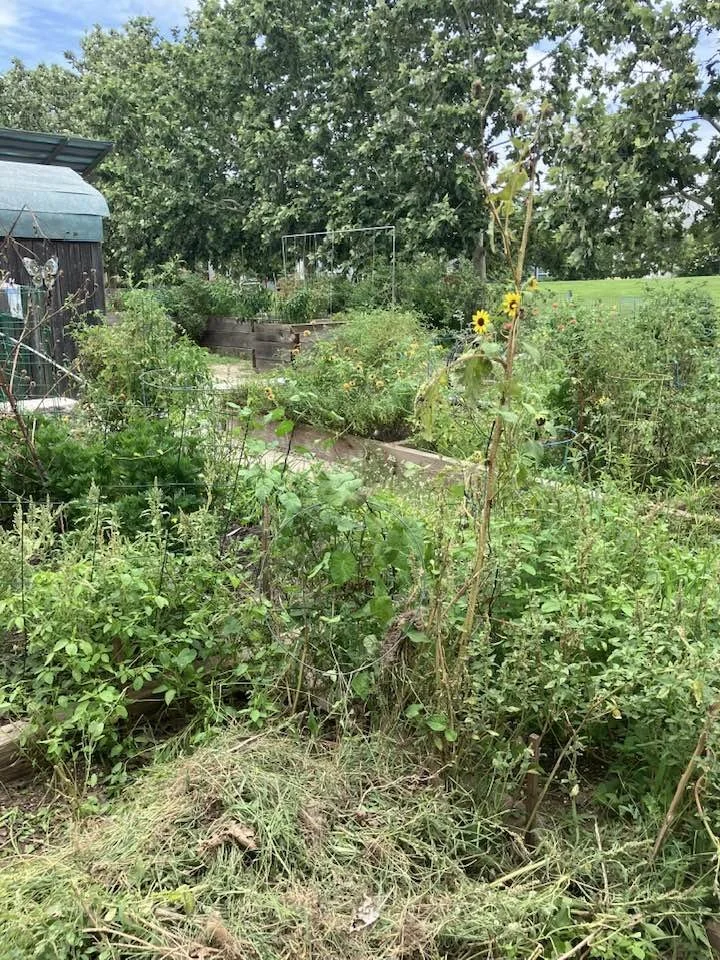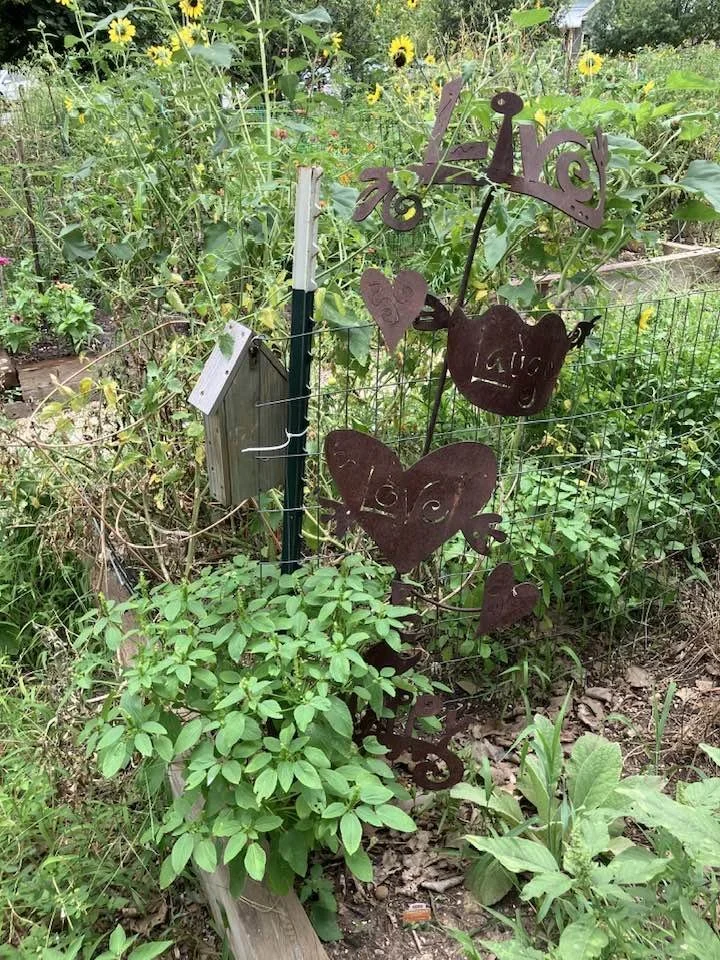Most afternoons you can find me at the community garden two blocks from my house. You need a code to open the locks on the entry gates and the tool shed which makes perfect sense. But these days locks and access credentials also make me feel uncomfortable, even isolationist. That’s saying a lot when you crave solitude as much as I do.
The five-by-seven plot I rent is no different from most ground-level spaces. But it’s been difficult growing anything not used to the garden environment. Half the seedlings I’ve introduced there from my indoor hydroponic nurseries have died from the heat, the bugs or the shock of trying to root in earth that several rounds of potting soil amendments hasn’t completely tamed.
I still call it a privilege to be part of this tiny, slightly anarchic nation of green-loving solitaries. It took five years of badgering the HOA to get the plot where I now grow corn, eggplant, tomatoes, bell peppers and small herd of rescued zinnias. Even then it took a gardener on the inside speaking on my behalf to finally get access. Like America in 2025, my community garden plot is the problem child I still manage to love.
The hydroponic seedlings I lost would no doubt have had an easier go of things in the raised beds gardens outside my door. The soil there is soft, full of nutrients and less prone to infestations. At the community garden, the soil, though amended, is still harsh. And the pests the inhabit that soil are singularly aggressive. They devoured a small watermelon plant it took me weeks to cultivate in my hydroponic garden in less than an hour and while I was watching.
My plot is also less protected from the elements. A brief but violent May hailstorm that brought too much of everything—wind, rain and hail the size of baseballs—damaged all the plants I put in. The plants at my house fared somewhat better if only because I was able to drag some potted plants in to shelter before they could be destroyed.
And then there were the late June/early July rains. Austin didn’t flood badly though Kerrville, a hundred miles to the west, did. After that it rained for days on end. The excess of water made that made green things grow with abandon also caused rot to set into leaves, branches and roots. The largest of my two tomato plants is still recovering. For a time, it grew outrageously; then septoria fungus began appearing on large sections of hail-damaged branches and leaves. I cut everything back and now what was large, unruly plant is down one healthy branch.
My garden thrivers have been the ones I’ve rehomed from the gravel walkways where they’ve taken root or from abandoned plots. These days I have quite a selection to choose from. Things have gotten so overgrown in spaces near mine that I’ve found myself doing rough trims just to keep mine clear. Many of the walkways, too, have turned into weedy jungles. Sometimes I imagine myself in William Faulkner’s Yoknapatawpha County, but the vision isn’t romantic. Central Texas is the hot, dry south of the interior, not the decaying gothic south of Gulf Coast Mississippi. The flood/drought cycle of climate change is real.
Some gardeners haven’t returned since the storms. A young woman and her two small children, a boy and girl, would often come by at about the same time as I did. Through April and May, they dug, planted and pruned with tender determination. I never saw them after the hailstorm, even though their partially damaged garden is still producing vegetables. Another man who replanted his weedy plot after he learned I almost claimed it has since let the weeds take over his garden again. Now his plot is more derelict than when I first found it.
Apart from the gardeners who have left Austin to summer elsewhere, those who stopped likely believed gardening would be easy. A relaxing pastime that might eventually yield a few organic vegetables. It’s not so simple. The rewards are there but not without effort. In the spring, I saw an empty plot with a sign that asked if the space was taken and offered a telephone number. Can someone call me, please? I suspect the person who put it up was an idealistic outsider who managed to find a way in. Now that sign—and the plot—has been almost completely engulfed by grass and weeds.
Those who continue to return know, or at least accept, the risks and rules, spoken and not, of tending gardens here. Your plot is yours for as long as you pay for it. If you choose to work another plot and not tell a (largely disinterested) HOA, you may be forced to give it up to someone gets assigned your adopted space. If you abandon your plot for more than a several months and your garden appears to have plants that are still viable, they and what they produce are up for grabs. I’ve partaken of such abandonments more than once without regret.
The bones of this tiny garden-nation are worn but solid. The wooden railroad ties marking out each plot are in decent condition. So is the shed that still bears the angled streak marks of the hail that hit it. The roof leaks a little, but not enough to endanger the tools inside. The covered sorting tables outside seem sturdy enough, too. But the shed offers better protection from the unexpected deluge as I found out the afternoon I trusted in a partly cloudy sky and didn’t take an umbrella with me.
Apart from a few handfuls of cherry tomatoes and some yellow squash from a plant later smashed by hail, I haven’t harvested much here so far; I’m still learning what I can coax from the earth. My stubbornness, in the meantime, has made friends with this place: beyond the weeds and unpredictable weather, there’s still possibility so long as I remain vigilant and willing to adapt.
And for now, that possibility is just enough to keep me coming back.



